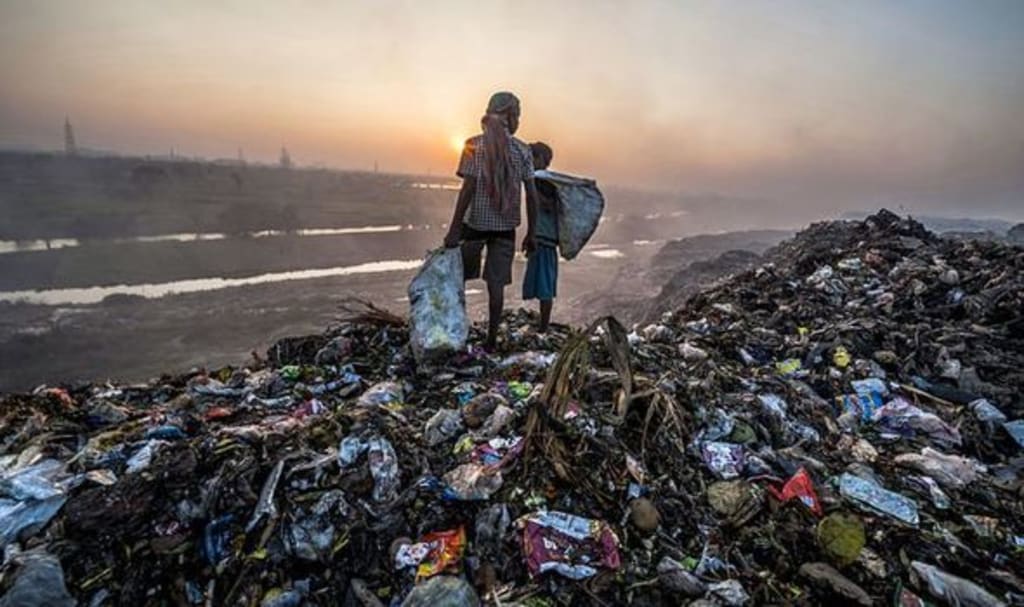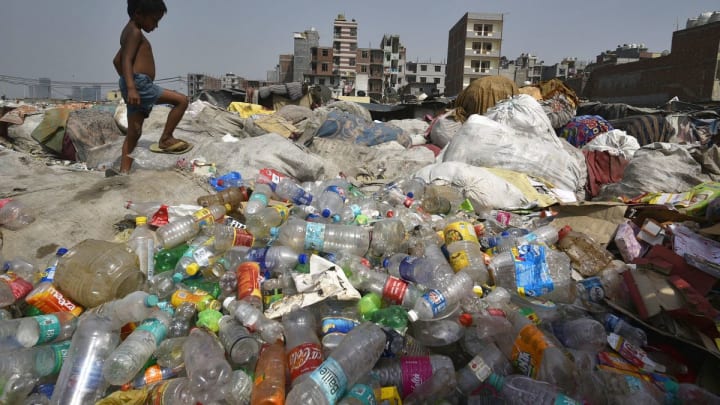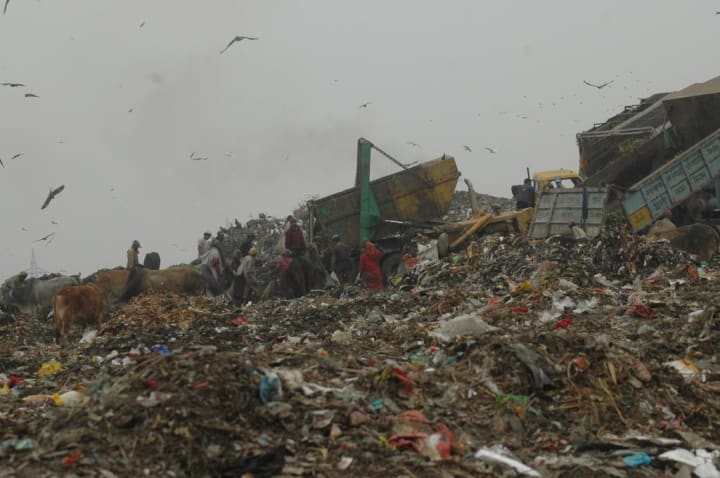India's Mount Everest of Garbage: A Looming Environmental Crisis
India's Mount Everest of Garbage: Urgent Action Needed to Address the Waste Management Crisis

In recent years, India's capital city, Delhi, has been facing a growing problem - the "Mount Everest of garbage." This massive landfill, officially known as the Ghazipur landfill, is located on the outskirts of the city and has become a symbol of the country's ongoing struggle with waste management and environmental pollution.
The Ghazipur landfill was opened in 1984 as a temporary solution to Delhi's waste management problem. However, over the years, it has grown to become one of the largest landfills in the world, covering an area of over 70 acres and towering over 200 feet in height. The landfill receives around 2,500 tonnes of waste every day, and the authorities struggle to find space to dispose of it.
The Ghazipur landfill is not only an eyesore but also a health hazard. The waste, which consists of everything from plastics to hazardous chemicals, emits toxic fumes and methane gas, which pose a significant risk to the environment and the health of nearby residents. The landfill also poses a threat to the Yamuna river, which flows nearby and is a major source of water for the city.
Despite the obvious risks, the authorities have been slow to act. The landfill has become a political hot potato, with local and national authorities blaming each other for the problem. The landfill is also a source of income for many people who work in the informal recycling sector, making it difficult to shut down.
The problem of waste management in India is not unique to Delhi. The country generates around 62 million tonnes of waste annually, with most of it ending up in landfills or dumped in open areas. This has led to widespread environmental pollution, with air and water quality in many parts of the country deteriorating rapidly.
To address this growing problem, the Indian government launched the Swachh Bharat Abhiyan (Clean India Mission) in 2014. The mission aims to make India clean and free of open defecation by 2019 and to address the country's waste management crisis. The government has also introduced several other initiatives to promote waste segregation and recycling.
However, despite these efforts, India's waste management problem remains a significant challenge. The country lacks the infrastructure and resources to manage the growing volume of waste effectively. The informal recycling sector, which employs millions of people, is also poorly regulated, leading to unsafe working conditions and health hazards for workers.

advantage and disadvantage Mount Everest of garbage
The "Mount Everest of Garbage," also known as the Ghazipur landfill in Delhi, India, is a massive dumping ground that has been accumulating waste for decades. While there are some advantages to having a landfill in the city, there are also several disadvantages that cannot be ignored.
Advantages:
Convenient waste disposal: The landfill provides a convenient and centralized location for the disposal of waste generated in the city.
Employment opportunities: The landfill also provides employment opportunities for those who work in the waste management industry, including waste collectors and landfill workers.
Energy generation: Some landfills are equipped with technology to convert waste into energy, which can then be used to generate electricity.
Disadvantages:
Environmental degradation: The Ghazipur landfill has caused significant environmental degradation, including air and water pollution, soil contamination, and the destruction of nearby wildlife habitats.
Health hazards: The landfill poses a serious health hazard to nearby residents, as it releases toxic gases and chemicals into the air and water, which can lead to respiratory problems, cancer, and other illnesses.
Land scarcity: Landfills require a large amount of land, which can be a challenge in densely populated areas like Delhi. The Ghazipur landfill, for example, has already exceeded its capacity and is now taller than the Taj Mahal.
Aesthetic concerns: Landfills are often unsightly and emit foul odors, which can negatively impact nearby communities and discourage tourism.
Overall, while landfills like the Ghazipur landfill do provide a solution for waste management, they also come with several significant disadvantages. It is essential for governments and communities to work together to find more sustainable and environmentally-friendly waste management solutions to prevent further harm to the environment and public health.

In conclusion, The "Mount Everest of Garbage" in Delhi, India, known as the Ghazipur landfill, is a massive landfill that has been accumulating waste for decades. While it provides convenient waste disposal and employment opportunities, it also causes significant environmental degradation, health hazards, land scarcity, and aesthetic concerns. India's waste management problem is a significant challenge that requires urgent action, including investing in infrastructure, promoting recycling and waste segregation, and enforcing regulations to ensure safe working conditions for workers in the informal recycling sector. Failure to address this problem could have dire consequences for the environment and public health.
About the Creator
Information Loop
I Will Providing Various Type Of Knowledge About All Topic






Comments
There are no comments for this story
Be the first to respond and start the conversation.